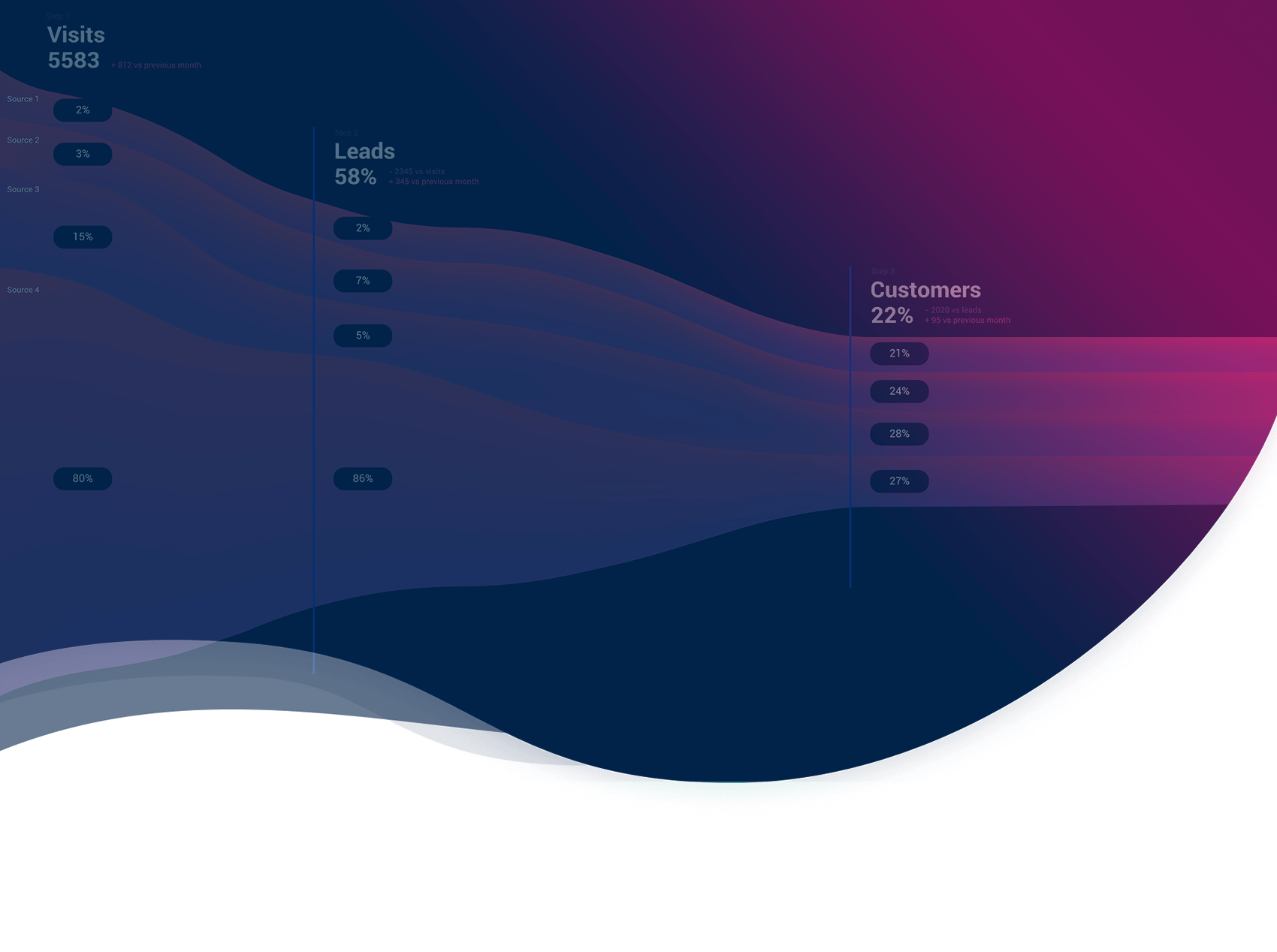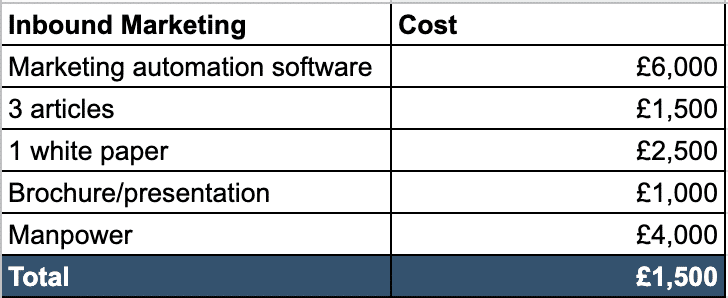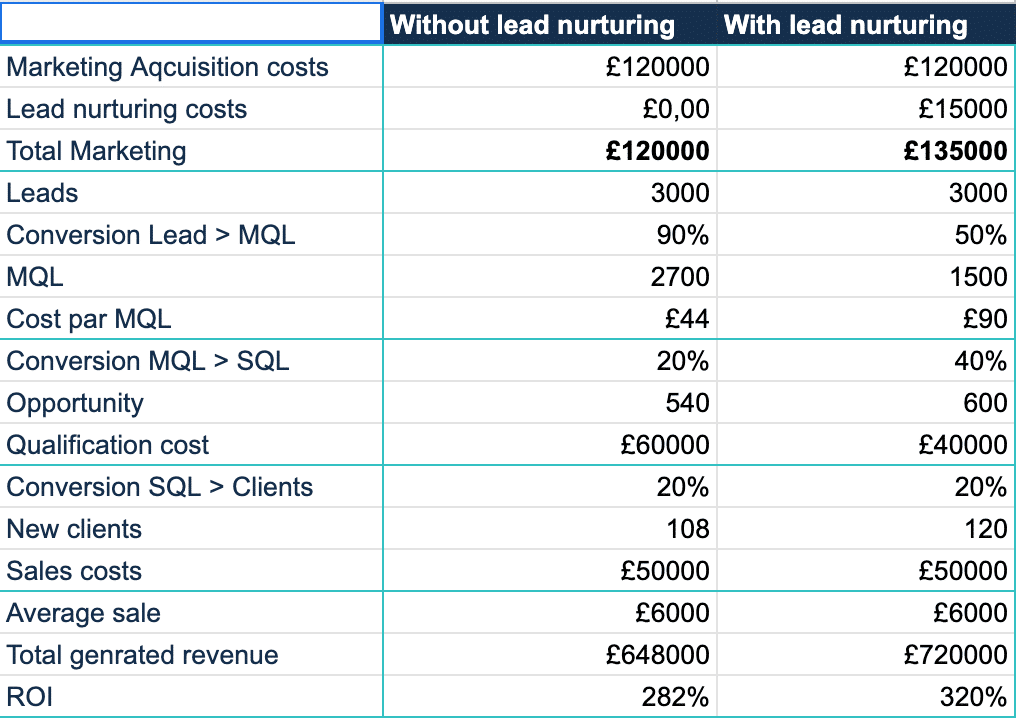Do your salespeople complain about the poor quality of the leads you send them? Is your sales cycle long and do you lack the resources to keep the conversation with leads going?
The answer to both of these problems is lead nurturing.
As the saying goes, markets are conversations. Lead nurturing provides the raw materials (e.g. content, message sequences) to nurture the relationship with prospects throughout the buyer’s journey.
According to Vertical Measures, companies who have implemented a lead nurturing strategy generate 58% more qualified leads at 33% less cost.
Hang on, more qualified leads at less cost? That’s something we all dream about. But how much does a lead nurturing programme cost in practice?
In this article, we’ll take a look at the essential parts of any lead nurturing programme and the resources you need to put one in place. And based on these, we’ll give you an estimate of what your B2B lead nurturing programme will cost. In this article, we’ll cover:
- What lead nurturing is.
- What resources you need.
- How to calculate a lead nurturing budget.
 1. What is lead nurturing?
1. What is lead nurturing?
It goes without saying that you have to generate prospects. But that’s not enough. You still need to transform these prospects into sales opportunities.
Traditionally, the marketing department was responsible for generating leads. Then salespeople took over to convert these leads into customers.
But once you have a certain number of leads, it becomes too difficult for the sales team to accompany each lead individually through to the end of the buyer’s journey.
Lead nurturing lets you select the right leads and move them closer to purchase so that salespeople can focus on closing sales. In other words, lead nurturing does what your best salespeople are very good at, but on a much larger scale.
And, of course, this costs money.
So, how much does lead nurturing really cost?
It’s a difficult question because a lead nurturing programme is part of a wider strategy, like inbound marketing. Calculating a budget for lead nurturing is a bit like trying to set the price of the dough in a Calzone pizza.
Let’s take a look at the resources you’ll need to get started.
2. The resources you need for a lead nurturing program
To successfully implement a lead nurturing programme, you’ll need the following resources at a minimum:
a) Marketing automation software
Lead nurturing makes use of several things which are features of all good marketing automation software:
- Web tracking: 60% of the buyer’s journey happens online. To enable you to personalize your interactions with prospects and put them into some sort of context, you need a tracking tool that collects behavioural data throughout the buying cycle.
- Lead scoring: the software should let you score leads to situate them at a specific point in the buyer’s journey. A contact who has only viewed a few blog posts will have a lower score than a prospect who has downloaded a white paper and viewed your Pricing page.
- Contact management: the software will also be used to manage contacts and ensure that they are passed to salespeople at the right moment.
These advanced features are unique to marketing automation software. You won’t find them in email marketing software or a CRM. However, to make the job of salespeople easier, you should sync your marketing automation software with the CRM used by sales teams.
b) Content
To put a lead nurturing programme in place, you have to produce content for the bottom of the marketing funnel. Marketing automation software will help you to collect behavioural data and to provide leads with content based on how ready they are to buy.
Lead nurturing involves providing prospects with content throughout the buyer’s journey. So, you’ll need to produce content to support that.
To get started with a lead nurturing programme, you will need 3 or 4 blog posts, one piece of premium content (e.g. an eBook, a white paper), at least one piece of content about your product or service (e.g. demonstration, brochure, video, PowerPoint), and a few different email sequences.
c) Time / people
The time and manpower you will need to devote to a marketing automation tool can very much depend on what tool you are using. Often companies will outsource their content to agencies, but many automation tools are not exactly automated… believe it or not. Plezi is, and we estimate that you will only need 1 hour to 2 per day on the software, as so much, including our smart campaigns and newsletters run by themselves.
d) Automation
Marketing automation lets you carry out “smart” lead nurturing based on actual data. Marketers use this automation to set up different scenarios (workflows) or, using software like Plezi, to start a smart campaign.
The above resources represent the minimum number of things you need to start a lead nurturing programme. Of course, depending on your objectives, you can always allocate more resources to the programme if needed.
3. How to calculate a lead nurturing budget
Based on the resources listed above, let’s look at the minimum cost of starting a lead nurturing programme.
How much should your annual budget be for each item of expenditure?
Looking at these figures in greater detail:
The cost of marketing automation software can vary between £400 and £2,000 per month, depending on which software you choose, and often depending on the number of contacts to be handled.
- You’ll need to budget for around £500 for each specialized blog post. This cost includes not only writing (approximately £150 for a 1000-word article), but also content strategy, developing article briefs, SEO, and content promotion.
- White papers are pieces of premium content that are used to identify if a prospect has a definite need for your product or services. If a prospect downloads a white paper, they are demonstrating a clear interest in these. Here too, in addition to writing the cost includes the brief, layout, and content promotion.
- Brochures or presentations are both used by pre-sales representatives. This is content that is specifically designed for the bottom of the marketing funnel (i.e. when a prospect is in the “purchase” stage). The goal of content at this stage is to convince prospects of the value of your product or service.
- Lastly, you’ll need to add to the final cost all the time spent both defining your strategy and implementing lead nurturing campaigns.
£15,000. Seen like this, it’s just a figure. You’ll need to compare it with the expected return on investment of a lead nurturing programme to get a better idea of the value it represents.
Customer acquisition cost is also an essential KPI for lead nurturing. To calculate it, you divide the total amount of marketing and sales expenditure by the number of new customers acquired in a given period.
To help you calculate the ROI of a lead nurturing programme, we’ve developed a calculator that enables you to compare the results of a marketing department both with and without lead nurturing:
In the example above, we have 3,000 leads each year, either with or without a lead nurturing programme in place. Without lead nurturing, almost all leads are sent directly to salespeople. There is a certain cost involved in qualifying these because salespeople then have to “clean” the lead database.
At first glance, the cost of each Marketing Qualified Lead (MQL) is higher with a lead nurturing programme. But in fact, MQLs without lead nurturing are really still just prospects (less the 10% of “junk”), resulting in more work for the sales team later on.
What really matters when putting in place a lead nurturing programme is the conversion rate from MQLs to SQLs (sales opportunities). In our example, this conversion rate is twice as high with a lead nurturing programme, which in turn results in 60 more sales opportunities each year.
Also, in this example, the sales process remains unchanged. But this is a very conservative assumption because a lead nurturing programme normally speeds up this process.
In the end, we have 12 more customers each year with a lead nurturing programme, which represent £72,000 in additional revenue. We can add to this the £20,000 saved in qualifying leads and take away the £15,000 investment in lead nurturing. So, in this example, our investment of £15,000 has produced an additional £92,000.
Marketing departments should see lead nurturing as an investment. The top of the funnel won’t change, but the time saved by sales teams and the ability to better identify hot leads and turn them into customers will lead to a significant increase in sales revenue. Even better, this strategy enables even small sales and marketing teams to achieve great results and to increase both sales and customer numbers.








